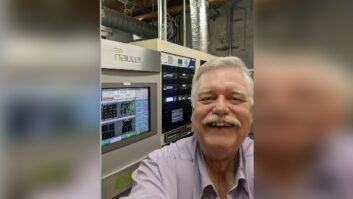The Author Outlines What He Sees as Fallacies In IBOC and Offers His Support of Cam-D
This article is in response to a commentary in Radio World about the positive aspects of Ibiquity’s IBOC (“Ray: AM IBOC Does Sound Good,” Nov. 3), and Guy Wire’s article in the Oct. 27 Radio World Engineering Extra, “Guy Breaks Down the Anti-HD Radio Arguments.”
* HD Radio is not in-band, as it causes interference to adjacent channels with a hissing sound, thus causing reception to be degraded on those stations. The FCC should not tolerate this interference. We are required now to stay on our assigned frequency. If we stray from our band, FCC inspectors would fine us. Even a harmonic can get us in trouble. It should be no different with HD Radio.
This interference can be detected even at great distances in other cities. Of course, if all the 50 kW stations install HD Radio, it could wipe out thousands of lesser-powered stations across the United States. Canada already has voiced concerns about the interference to their stations.
* Clear Channel and Ibiquity are championing a 5 kHz bandwidth reduction. Their reasoning, though they deny it, is to give more room for HD Radio. Also, they claim that no radios are capable of wide-band above 5-6 kHz. This is incorrect, and there are radios capable of wide-band – GE Super Radios, Grundig and others. I was always under the impression that AM radio was to reach par with FM radio at 15 kHz. Additionally, the analog stations would not be able to broadcast in stereo. It will be years before IBOC even approaches 10 percent of the 800 million radios. Meanwhile, all the AM analog stations would be handicapped with inferior broadcast systems. Talk about a disaster.
* The conversion to HD Radio requires spending thousands of dollars on new equipment, etc. Even the required erection of new towers and purchasing of new transmitters will be beyond the means of thousands of stations to convert. That’s not the end, though, as a license fee must be paid every year it is in use. A fee will be assessed on transmitters (HD). Estimated costs can range from $ 150,000 to $400,000 or more.
* The IBOC System cuts down skywave distance at night. There are listeners other than DXers that are tuning in to distant stations. In Salt Lake City, KSL(AM)’s 50,000-watt signal is heard all over the west. Many people listen at night. With IBOC the signal will be impaired, and what does get out will be jumbled and not listenable. On top of that, the hissing interference will affect adjacent channels 1140, 1150, 1170 and 1180.
* The digital processing delay from the microphone to your speaker can range up to eight seconds. A listener at a sporting event will see the action but the play-by-play will be delayed. However, IBOC has a plan; they will go back to analog during sporting events. This is progress?
* The IBOC signal does not work well with directional antennas. There are hundreds of directional antennas in the country that will be frustrated in this installation of HD Radio. Consulting engineers already are trying to solve this problem.
* HD Radio’s signal gets interference from high-power electrical lines. Find an HD Radio station in your town and check it out.
* Coverage of the station’s signal will be cut down and consequently not reach as far. Management will have to redo their coverage maps. On the fringes of coverage with HD Radio, the radio receiver will switch back to analog. It will be quite a trick to balance out volume levels while it pops back and forth between HD and analog.
* The IBOC system is proprietary, which means it is not an open-market system. The backers are the large chain broadcasters and manufacturers that will require an annual fee forever.
They say not to criticize another’s work unless you have something better to offer. I believe that something better is the CAM-D Digital Radio Broadcasting System from Kahn Communications.
CAM-D is doing what it promised on KDYL(AM) 1060 in Salt Lake City. Tests on the spectrum analyzer show it has a clean digital signal. We are delighted to have this new digital modernization for AM Radio. Unlike the IBOC system, CAM-D will not interfere with adjacent channels. Interference from high-power electrical lines is eliminated almost completely. The signal remains strong when going through road underpasses.
CAM-D dramatically increases, and does not limit, skywave coverage. It is compatible with the more than 800 million radios in America, and more than passes NRSC standards with +/- 8 kHz bandwidth.
CAM-D will utilize the several data channels that alert the listening public about storms, road conditions and national defense. The installation cost to broadcasters is minimal compared to HD Radio, and it does not require purchasing new transmitters, tower antennas or processors. And there is no time delay from mic to speaker in your car, home or business.
CAM-D will work to improve the AM band, not take it backwards to 5 kHz. More wide-band digital radios are on the horizon that will make AM even better.
Some have posed the question why Leonard Kahn waited so long to come up with his new digital radio system. It was only when he saw what the Ibiquity system was going to do to degrade AM radio that he went to work on an alternative digital system.
Mr. Kahn is a genius – an adjunct professor of engineering at Polytechnic University of New York who holds nearly 100 patents and has worked under contract at Bell Labs and RCA Labs. All I ask is that stations look before they leap and refrain from installing something that will take the AM band backwards.











